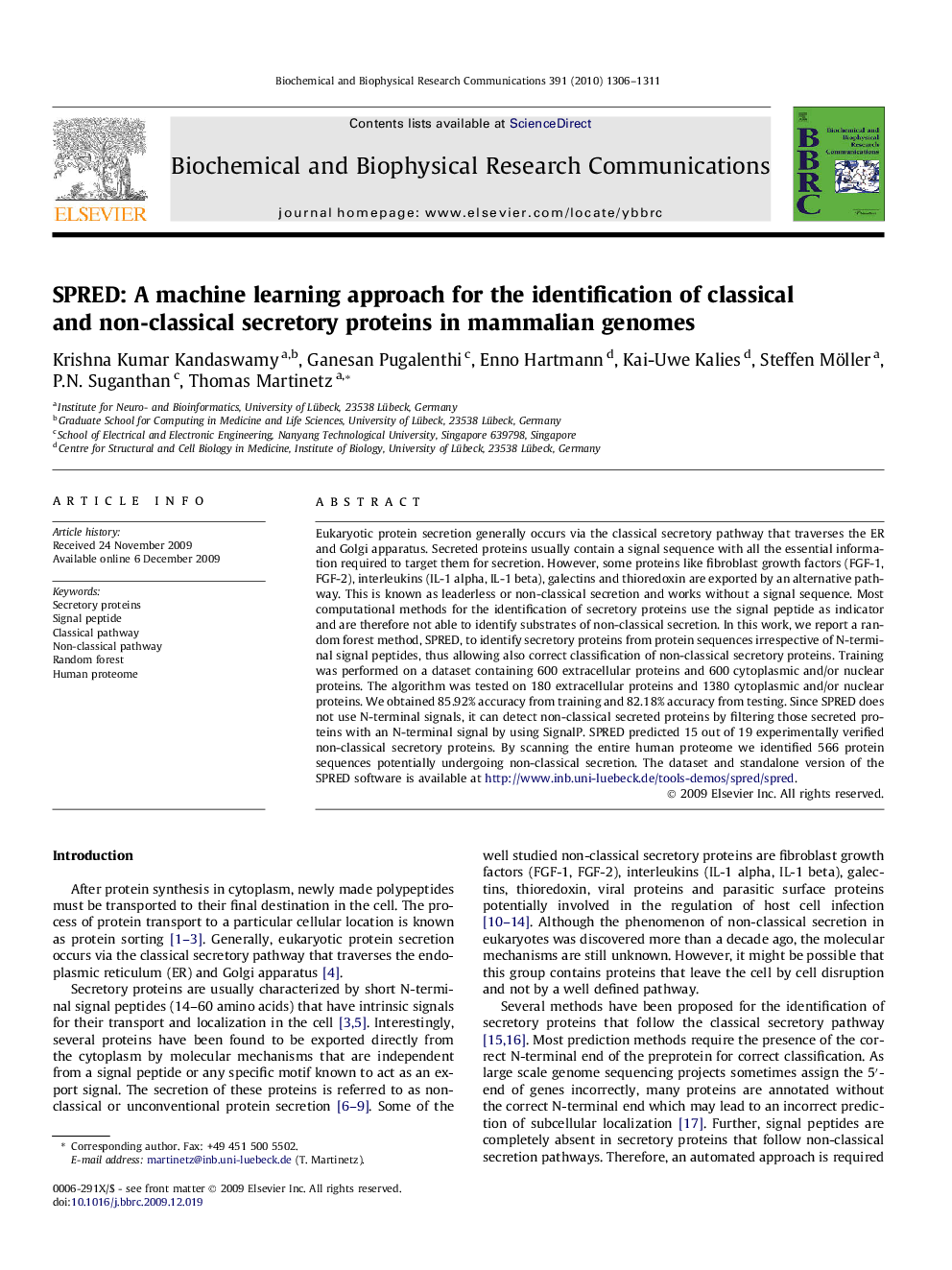| Article ID | Journal | Published Year | Pages | File Type |
|---|---|---|---|---|
| 1932502 | Biochemical and Biophysical Research Communications | 2010 | 6 Pages |
Eukaryotic protein secretion generally occurs via the classical secretory pathway that traverses the ER and Golgi apparatus. Secreted proteins usually contain a signal sequence with all the essential information required to target them for secretion. However, some proteins like fibroblast growth factors (FGF-1, FGF-2), interleukins (IL-1 alpha, IL-1 beta), galectins and thioredoxin are exported by an alternative pathway. This is known as leaderless or non-classical secretion and works without a signal sequence. Most computational methods for the identification of secretory proteins use the signal peptide as indicator and are therefore not able to identify substrates of non-classical secretion. In this work, we report a random forest method, SPRED, to identify secretory proteins from protein sequences irrespective of N-terminal signal peptides, thus allowing also correct classification of non-classical secretory proteins. Training was performed on a dataset containing 600 extracellular proteins and 600 cytoplasmic and/or nuclear proteins. The algorithm was tested on 180 extracellular proteins and 1380 cytoplasmic and/or nuclear proteins. We obtained 85.92% accuracy from training and 82.18% accuracy from testing. Since SPRED does not use N-terminal signals, it can detect non-classical secreted proteins by filtering those secreted proteins with an N-terminal signal by using SignalP. SPRED predicted 15 out of 19 experimentally verified non-classical secretory proteins. By scanning the entire human proteome we identified 566 protein sequences potentially undergoing non-classical secretion. The dataset and standalone version of the SPRED software is available at http://www.inb.uni-luebeck.de/tools-demos/spred/spred.
